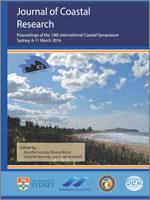Barcellos, R.L., Flores-Montes, M.J., Alves, T.M.F. and Camargo, P.B. 2016. Modern sedimentary processes and seasonal variatios of organic matter in a urban tropical estuary, Jaboatão River (PE) Brazil. In: Vila-Concejo, A.; Bruce, E.; Kennedy, D.M., and McCarroll, R.J. (eds.), Proceedings of the 14th International Coastal Symposium (Sydney, Australia). Journal of Coastal Research, Special Issue, No. 75, pp. 38–42. Coconut Creek (Florida), ISSN 0749-0208.
The aim of this research is to evaluate the environmental conditions in the Jaboatao River estuarine system (8°14′S/34°55′W), by studying sedimentary organic matter, which may provide information about anthropogenic influence in this tropical mesotidal estuary. The catchment area is 442 km2 with a population estimated at 500,000 inhabitants, and is characterized as an urban coastal plain estuarine system. Thirty surface sediment samples were collected in November-2010 (dry season) and May-2011 (rainy season). Results indicated that the adjacent sediments from continental shelf are sandy, moderately sorted and bioclastic (74.8�CO3), differing from estuarine sediments, which although sandy (silty-sand) are lithoclastic (17.4�CO3) and poorly sorted. The predominance of sand observed in both seasons is due to the small length of the river (75km) and to the low supply of mud sediments, since its drainage basin is located mostly on sandy coastal plain. Carbon and nitrogen contents indicates a sensitive seasonal variation with large ranges, varying from 0.03–8.51% and from 0.00–0.54%, respectively, with higher contents prevailing in the inner portions of the estuary and gradually decreasing towards the shelf. The organic matter origin, according to the C/N ratios and δ13C values reflected the occurrence of marine organic matter in shelf samples (C/N<7.0/δ13C>-20.0‰PDB). However, the estuary terrigenous organic matter proportion increases upward (C/N>15.0). The δ13C values are typical of C4 higher plants (−27.0‰PDB) and domestic sewage mix (−26.7‰PDB), ranging from −28.0 to −25.9‰PDB and indicating evidences of urban pollution in Jaboatão estuarine sediments.





